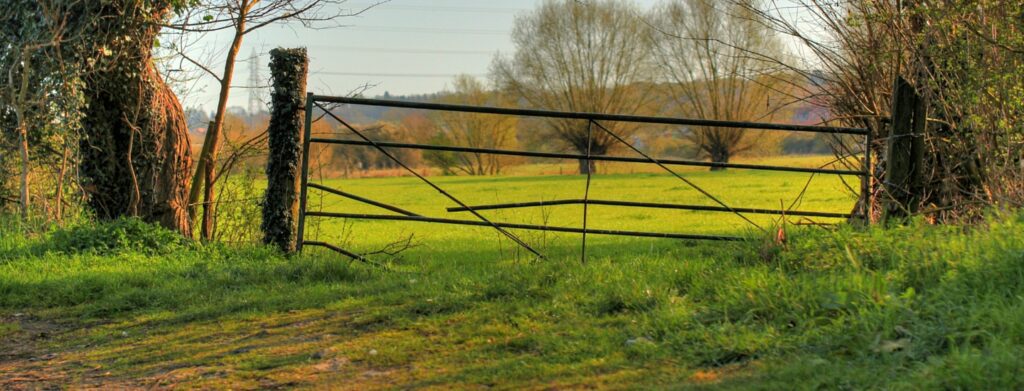Author
In November 2015, the First-Tier Tribunal (Property Chamber) Agricultural Land & Drainage issued a Certificate of Bad Husbandry in Chapman v Lumb (ALD/Y/CBH/2014/001). Such applications are rare and successful applications even rarer. This article examines why the application in Chapman was successful and what distinguishes it from the leading case authorities.
Facts
The case related to a dairy holding in Yorkshire. The Landlord’s application under Schedule 3, Part 2, Paragraph 9 of the Agricultural Holdings Act 1986 (the “AHA”) centred upon the poor condition of the holding and animal husbandry issues, more specifically:
- Significant deterioration of farm buildings;
- Over-grazing and poaching;
- Overstocking;
- Collapsed stone walling, missing gates, slurry run-off.
The Landlord accepted that conditions on the Holding had improved to a degree since the Application had been lodged. The Tenant had undertaken some minor works of maintenance, but there remained significant long term items of disrepair and lack of maintenance. Overstocking remained a key complaint.
On inspection, the Tribunal found the condition of the grazing to be “generally reasonable” and the dairy herd in a “satisfactory condition”. However, stocking levels were considered to be very high for the buildings and fixed equipment available. There were 90 milking cows competing for 50 cubicles and just 20 spaces for 36 heifers. This lack of adequate housing was impacting on yields and herd performance. The Tenant had only achieved 3,970 and 4,900 litres of milk per cow in the previous two years; 30% lower than the accepted comparable.
The Tenant’s defence was considerably weakened by the involvement of the Animal Health & Veterinary Laboratories Agency (the “AHVLA”) in the two years prior to the Application following a welfare complaint. The Tribunal placed significant weight on the AHVLA reports which declared the Holding “severely overstocked”. In addition, animal welfare issues had led to a reduction in the Tenant’s Single Farm Payment receipts by 3% and 24%.
The Tenant’s business was not in good heart. Although he had made a net profit of £13,718 in the previous year, milk prices had been above 30p per litre on average and with the reduction in prices to 21p per litre in 2015, the Tribunal predicted a loss in the current financial year.
The Tenant relied upon proposals to install a new milking parlour and erect a new livestock building, for which he had obtained planning permission. However the question of how such works would be financed was a key issue. The Tenant was not relying on any particular disrepair or default on the part of the Landlord.
Tribunal’s Decision
The Tribunal ruled that the Tenant was failing to meet the “majority” of the rules of good husbandry within section 11 of the Agriculture Act 1947 and granted a certificate of bad husbandry. The Tenant was not maintaining a reasonable standard of efficient production within the meaning of section 11(1), nor was he keeping the Holding in a condition which would enable him to achieve a reasonable standard of production in future.
The overstocking issues were a key factor in determining that the Tenant was failing to maintain an efficient standard of livestock management (section 11(2)). Crucially, the Tribunal felt that there was every reason to believe that the overstocking problem would persist because it could not be resolved without either a reduction in stock levels or substantial investment in buildings and fixed equipment (new and existing). The Tribunal concluded that neither option was realistic.
The Tenant was in a Catch-22 situation: he could not continue the current system of farming, but nor could he afford to change it. Indeed, he had failed to reduce stock levels over the two previous winters despite pressure from the AHVLA to do so, and had also failed to commit to reducing numbers in front of the Tribunal.
The Tribunal therefore concluded that the Tenant simply could not afford to make a commitment to reduce numbers because it would not be economically viable. He did not have the financial means to take the necessary action. A reduction in herd numbers should improve milk yields, but it would lead to a reduction in income leaving no scope for the Tenant to finance the new livestock building and milking parlour to allow him to increase herd numbers again in future. Added to that, a reduction in cow numbers would not remove the immediate, pressing need for a new slurry store and silage clamp – money would still be required to finance those items in the interim.
In reaching its decision, the Tribunal held that it was entitled to have regard to what had been done by the Tenant in the past, “to the extent that it throws light on the manner in which the Holding is being farmed”. On the facts, the Tribunal judged the holding to be mismanaged, with its current condition described as “parlous”, and concluded that there would be a repeat of the previous years’ issues in the future.
Commentary
This is the first Certificate of Bad Husbandry to be granted in 6 years, and only the fifth in the past 30 years. Most striking perhaps is the fact that this is a decision relating to an actively managed, productive holding. It was the Tenant’s management that was under the spotlight.
The previous decisions in which Certificates have been granted are characterised by abandonment, neglect and a complete absence of any management at all. With the exception of Davies v Philipps [2007], the abandonment extended across the entirety of the holdings under consideration (see: Tarmac UK Ltd v Hughes [2009]; Edwards v Mault [2002]; Hale v Stone and Waterleaze Nursery [1998]). All of the holdings were small and none were being farmed in any ordinary sense of the word.
In Davies v Philipps, the Tribunal was persuaded to grant a Certificate because the tenant had effectively converted part of the Holding into a rubbish tip,
(extending to 31% of the overall acreage), and the extent of the abandonment and non-management of that land (going back 15 years) amounted to extremely bad husbandry which affected the whole unit.
For all the Tenant’s failings in this case, he was actively farming a sizeable holding and was just about breaking even. However his management was heavily criticised and fell short of the standards of husbandry expected of him. The animal welfare issues no doubt played a significant role in the Tribunal’s overall decision, as did the Tenant’s failure to alter his management practices to alleviate those issues. Whilst it acknowledged that financial pressures were to blame, the Tenant’s inability to resolve those pressures and indeed the likelihood that they would deepen, counted against him.
In an era of falling farm incomes, increased pressure on production margins and a lack of surplus funds or strong trading forecasts to finance investment, one has to wonder if Chapman v Lumb is an ominous sign of things to come.
For more information please contact Josie Edwards, Associate in the Agricultural team on josie.edwards@michelmores.com or 0117 906 9337.
Print article

